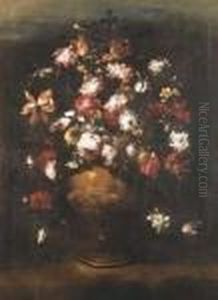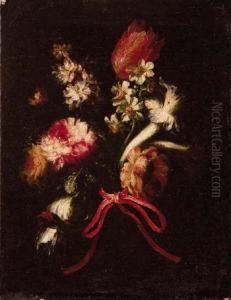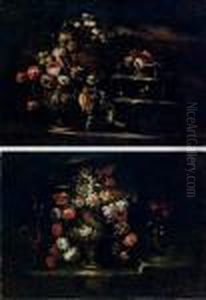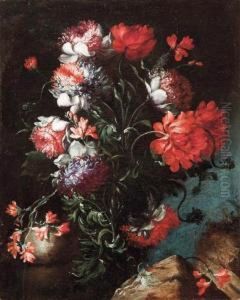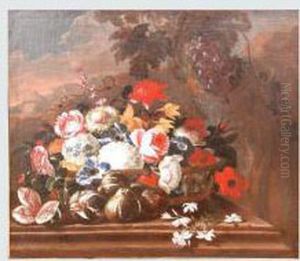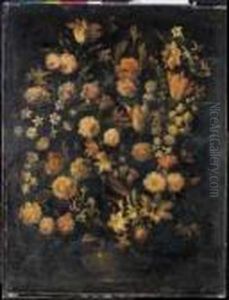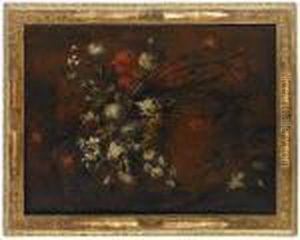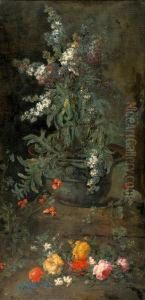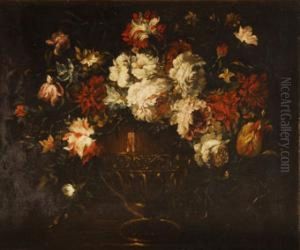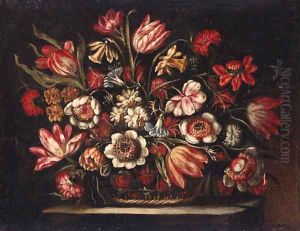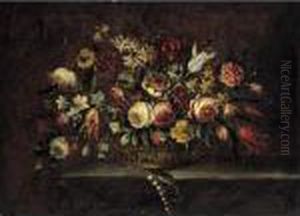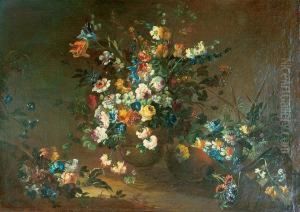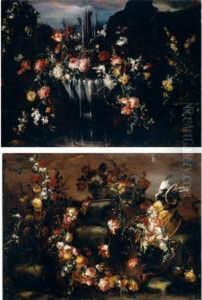Margherita Caffi Paintings
Margherita Caffi was an Italian Baroque painter, renowned for her still-life paintings, especially those depicting flowers. Born in Milan around 1650, Caffi's artistic talent came to light in an era when female artists were not commonly recognized or encouraged. Despite the societal norms of her time, she pursued a career in art and became known for her delicate and detailed depictions of natural subjects.
Caffi's work is characterized by its vivid realism and attention to the subtleties of light and shadow, which she used to bring her floral compositions to life. She often painted bouquets containing a variety of flowers, set against a dark background, which helped to enhance the luminosity of the colors and the textures of the petals and leaves.
Her paintings were not just aesthetically pleasing; they also carried symbolic meanings, which was a common practice in still-life painting during the Baroque period. Flowers in her compositions often had emblematic associations, such as the transience of life and beauty, reflecting the vanitas theme popular among artists of her time.
Margherita Caffi's works were collected by art connoisseurs and nobility, and she achieved a degree of success uncommon for female artists in the 17th century. Her paintings can now be found in various museums and private collections, serving as a testament to her skill and contribution to the world of art.
Caffi continued to paint and develop her style throughout her life, and she passed away in 1710. Her legacy lives on, and she is remembered as one of the few female still-life painters who gained recognition during the Baroque era. Her work remains an important part of the Italian artistic heritage and continues to be studied and admired by art enthusiasts and historians alike.
